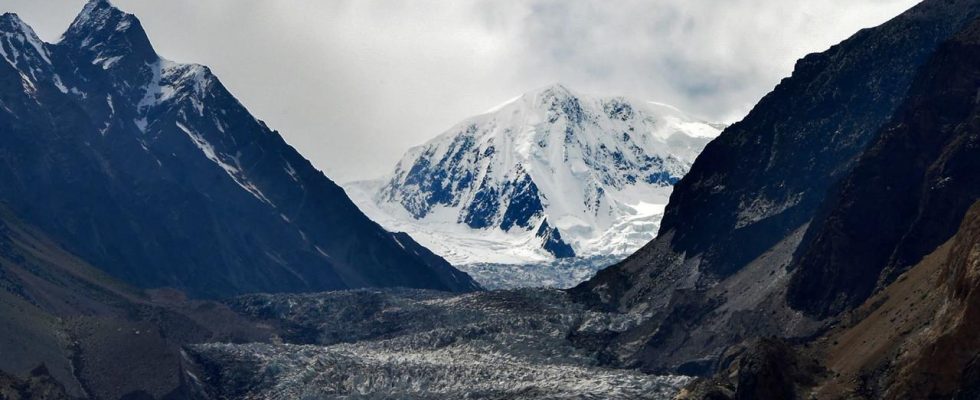Climate change is increasingly threatening the glaciers in the Hindu Kush Himalayan region. According to one report, up to 80 percent could be gone by 2100. This would have significant consequences for the region.
Glaciers in the Hindu Kush and Himalayas are melting at an unprecedented rate and could lose up to 80 percent of their current volume this century. This is the result of a presented on Tuesday Report by the Kathmandu-based International Center for Integrated Mountain Development (ICIMOD). The report is based on data up to December 2022.
Since 2010, glaciers have retreated 65 percent faster than in the previous decade. The snow cover is also decreasing, according to the report.
With a warming of 1.5 degrees Celsius or two degrees compared to the pre-industrial period, the glaciers in the region would lose around 30 to 50 percent of their volume by the year 2100, according to the study by the international researchers. With a warming of three degrees, the glaciers in the eastern Himalayas would lose up to 75 percent of their ice – at four degrees up to 80 percent.
floods and lack of water
The researchers expect the consequences for the Hindu Kush-Himalayan region, which extends over a large area from Afghanistan via India, Nepal and China to Myanmar, in some cases considerable. For example, as in other glacial regions, the loss of ice and snow could initially lead to more frequent and severe flooding and landslides.
In the long term, water shortages are more likely down the valley because the glaciers feed large rivers such as the Ganges, Indus, Mekong and Yangtze. The region’s ice and snow are an important source of water for 12 rivers in 16 Asian countries.
Researcher urges quick action
“Two billion people in Asia depend on the water from the glaciers and the snow here,” ICIMOD Deputy Director Izabella Koziel said in a statement accompanying the report. “The consequences of the loss of this permafrost zone are unpredictable.” Action must be taken now.
Studies of climate impacts are difficult for the Himalayan region. Unlike the European Alps and North American Rocky Mountains, the region does not have long historical records of field measurements that tell whether glaciers are growing or shrinking.
In recent years, however, the situation has improved. In 2019, the United States made available satellite imagery of glaciers in the region dating back to 1970, laying a new scientific foundation. Further advances in satellite technology over the past five years, as well as increased efforts on the ground, have advanced the research.

